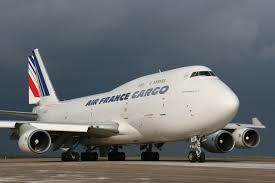http://www.flightglobal.com/AIRSPACE/photos/erwan_ei/images/6140/boeing-747-400-bcf.jpg
This plane has the above needs, so it will need a large amount of power to accelerate to high speeds, have a lot of room and
still be aerodynamic so it will have to be very large, it will not need a large angle of attack though it will need some, and have a large
enough planform area to combine with the thrust to produce enough lift to get off the ground. It will also need a long runway and
land strip to accomodate all this.
This is an example of a plane designed to carry a small pay load but can take off and land in just a few hundred feet and in some cases even less!!

http://www.mackey-super-cub.info/images/Super-Cub-7.JPG
This aircraft is a Supercub. It is a very popular Alaskan plane because of it's versatility and ability to get in and out of the remote places
Alaska has to offer. This plane only has 80 horsepower and can only fit 2 people. This equates to 2 people, their gear, and a moose.
This aircraft has a low cruise speed, but a quick acceleration and a large Coefficient of Lift. It also has a large angle of attack.
